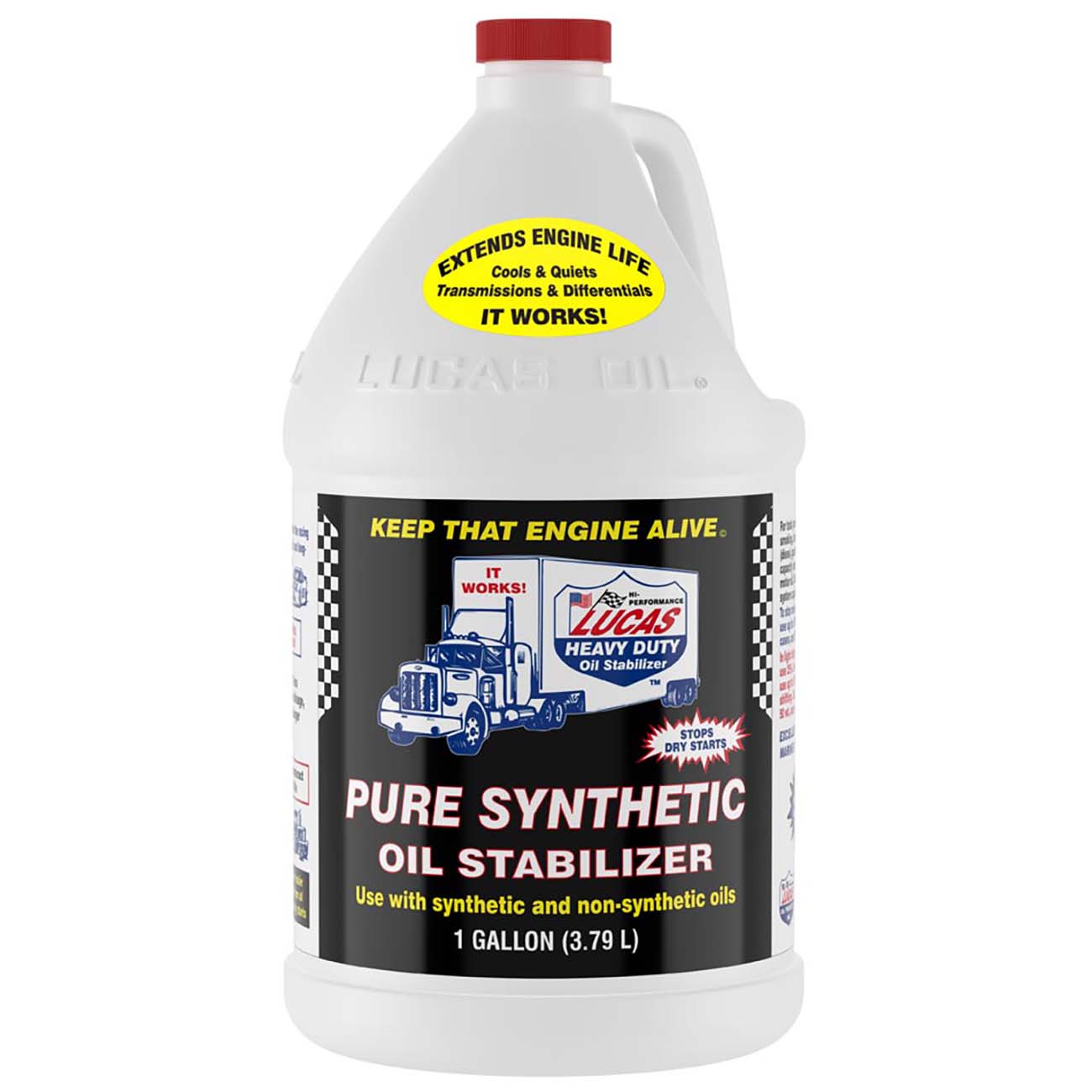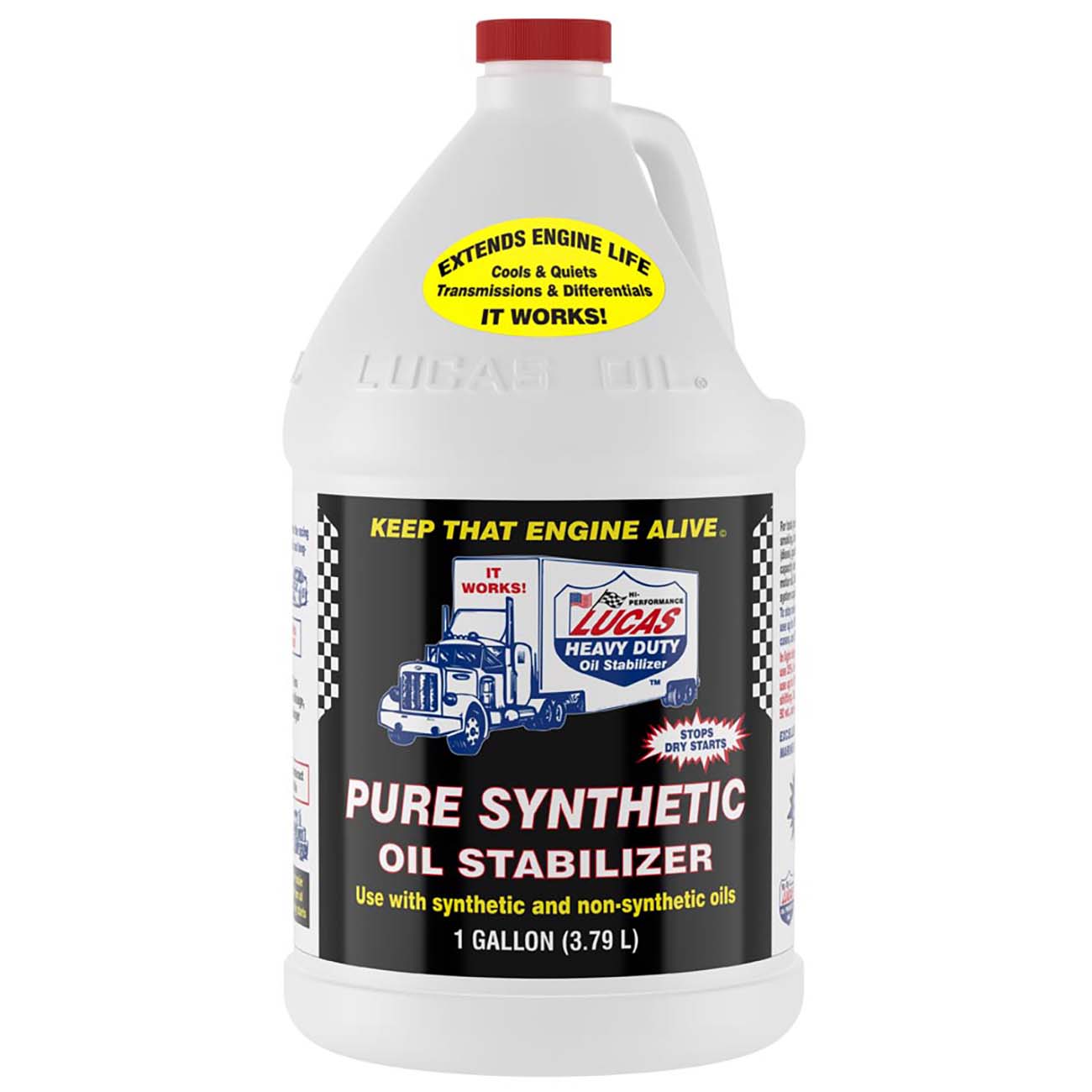Answer
Sep 03, 2024 - 09:27 AM
Yes, it is possible to overuse Lucas Oil Synthetic H/D Oil Stabilizer, and doing so can potentially lead to negative effects on your engine's performance. While the stabilizer is designed to enhance the properties of your engine oil, using too much can alter the oil's viscosity beyond optimal levels, affecting the lubrication and functioning of your engine.
Potential Consequences of Overusing Lucas Oil Synthetic H/D Oil Stabilizer:-
Increased Oil Viscosity:
- Thicker Oil: Overusing the stabilizer can make the engine oil too thick (high viscosity), which can cause poor oil flow, especially during cold starts or in colder weather. Thick oil can struggle to reach all engine parts quickly, leading to increased wear, particularly in the initial moments after starting the engine.
- Reduced Lubrication Efficiency: Oil that is too thick may not lubricate engine components effectively, potentially leading to increased friction, wear, and heat generation.
-
Oil Pump Strain:
- Increased Load on the Oil Pump: The oil pump in your engine is designed to circulate oil of a specific viscosity. Overly thick oil can strain the oil pump, causing it to work harder than necessary, potentially leading to premature wear or failure of the pump.
-
Reduced Fuel Economy:
- Higher Engine Resistance: Thicker oil increases internal resistance within the engine, which can lead to decreased fuel efficiency. The engine has to work harder to overcome this resistance, consuming more fuel in the process.
-
Possible Engine Damage:
- Inadequate Lubrication: Overuse of the stabilizer can lead to inadequate lubrication in certain engine areas, particularly in tight tolerance areas like the bearings, lifters, and other small clearances, leading to premature engine wear or damage.
- Foaming and Aeration: Excessive stabilizer can also cause the oil to foam or aerate, which reduces its effectiveness as a lubricant and can cause cavitation in the oil pump.
-
Oil Passage Blockage:
- Restricted Flow: In some cases, too thick an oil mix can cause clogging in narrow oil passages, further reducing the oil flow to critical engine parts like camshafts, lifters, and crankshafts, which rely on consistent oil delivery.
To avoid these potential issues, it is crucial to adhere to the manufacturer’s recommendations when using Lucas Oil Synthetic H/D Oil Stabilizer:
- Standard Ratio: Lucas Oil generally recommends using 20% of the total oil capacity. For example, if your engine holds 5 quarts of oil, you should add no more than 1 quart of stabilizer.
- Extreme Conditions: For heavy-duty or high-performance engines, up to 50% of the total oil capacity might be acceptable, but this should only be done when necessary and based on specific usage conditions.
- Measure Carefully: Always measure the amount of stabilizer you add carefully. Use a measuring cup if needed to ensure accuracy.
- Consider Engine Type and Conditions: Adjust the amount based on your specific engine type, oil viscosity, climate conditions, and the severity of the operating environment.
- Monitor Oil Levels and Engine Performance: Regularly check your oil level and monitor the engine's performance after adding the stabilizer to ensure there are no adverse effects.
- Consult with a Professional: If you are unsure how much stabilizer to use, or if your vehicle has special requirements, consult with a mechanic or refer to your vehicle’s owner manual for guidance.
While Lucas Oil Synthetic H/D Oil Stabilizer is a beneficial additive when used correctly, overuse can lead to several potential issues, including increased oil viscosity, strain on the oil pump, reduced fuel economy, and possible engine damage. To ensure optimal performance and protection, always follow the recommended usage guidelines and adjust according to your specific engine and operating conditions.





Add New Comment